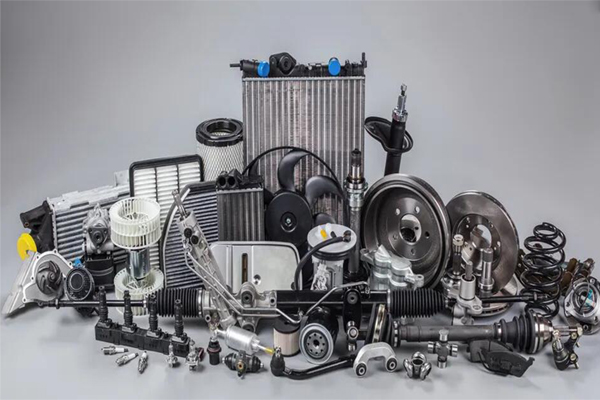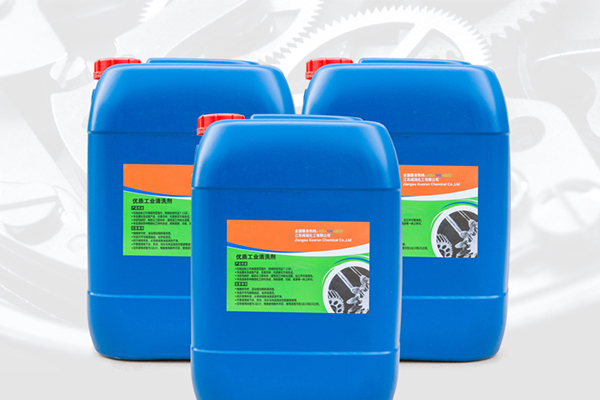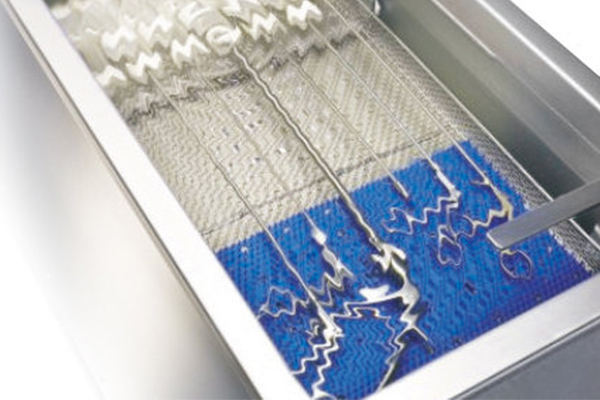Definition of cleaning agent industry
Industrial cleaning is the surface of the object is subject to physical, chemical or biological effects and the formation of pollution layer or cover layer called dirt, remove these pollutants or cover layer and restore the original surface condition of the process called cleaning.
cleaning agent industry product classification
1)Classification according to the fine degree requirements
General industrial cleaning agent, precision industrial cleaning agent, ultra-precision industrial cleaning agent
(1.1) general industrial cleaning agents, including vehicles, ships, aircraft surface cleaning, can only remove the relatively coarse dirt;
(1.2) precision industrial cleaning agents including a variety of products in the process of cleaning, a variety of materials and equipment surface cleaning, etc., to remove the tiny dirt particles as a feature;
(1.3) ultra-precision industrial cleaning agents including precision industrial production process of mechanical parts, electronic components, optical components, etc. ultra-precision cleaning, to eliminate very small dirt particles for the purpose.
2) According to the cleaning method classification physical cleaning and chemical cleaning
1. Physical cleaning is the use of mechanics, acoustics, optics, electricity, thermal principles, relying on the role of external energy, such as mechanical friction, ultrasound, negative pressure, high pressure, impact, ultraviolet light, steam, etc. to remove the object surface dirt without changing the dirt components of cleaning methods. That does not change the original chemical molecular components of the method.
(1.1) mechanical cleaning method: sweeper and scraper cleaning method, drilling pipe cleaning method, shot blasting cleaning method.
(1.2) hydraulic cleaning method: low-pressure hydraulic cleaning (low-pressure cleaning pressure of 196-686 kPa, about 2-7 kg force / cm2, equal to 0.2-0.7Mpa).
(1.3) high-pressure hydraulic cleaning: high-pressure cleaning pressure of 4900 kPa, about 50 kg force / cm2, equal to 5Mpa. this situation method is also called high-pressure water jet method, high-pressure cleaning machine.
2. Chemical cleaning is to rely on the role of chemical reactions, the use of chemicals or other solvents to remove dirt from the surface of the object method. Such as the use of a variety of inorganic or organic acids to remove rust, scale on the surface of the object, the use of oxidizing agents to remove the color of the surface of the object. The use of chemicals to make the surface contamination or cover layer (such as scale layer) with its chemical reaction and be removed, such as acid cleaning of the scale layer, alkali cleaning, etc. In order to make the substrate in the chemical cleaning without corrosion or corrosion rate control in the allowable range, usually in the chemical cleaning solution to add the appropriate amount of corrosion inhibitors and activation, penetration, wetting additives. Methods: immersion method, circulation method, cleaning method in operation is also called non-stop chemical cleaning method.
3. Electronic cleaning method of scale prevention, scale removal principle is: the use of high-frequency electric field to change the molecular structure of water, so that the scale prevention and scale removal. When the water through the high frequency electric field, its molecular physical structure has changed, the original connective chain macromolecules, broken into a single water molecule, the positive and negative ions in the water salts are surrounded by a single water molecule, the movement speed is reduced, the number of effective collision is reduced, the electrostatic gravitational force decreases, can not be in the heated wall type pipe surface structure, so as to achieve the purpose of scale prevention. At the same time, due to the increase in the dipole moment of water molecules, so that its positive and negative ions with salt (scale molecules to increase the ability to absorb and combine, so that the scale on the heated surface or pipe wall becomes loose and easy to fall off, producing the effect of descaling.
4. Electrostatic scale prevention, descaling and electronic descaling, as well as through changing the state of water molecules to achieve the purpose of scale prevention, descaling. Only the latter is the use of the role of electrostatic field, rather than the role of electrons. The mechanism is that water molecules have polarity (also known as dipole), when the water dipole through the electrostatic field, each water dipole will be positive and negative
In an orderly and continuous arrangement. If the water contains dissolved salts, its positive and negative ions will be surrounded by water dipole, also arranged in positive and negative order in the water dipole group, can not be their own movement, and therefore can not be close to the tube (apparatus) wall, and then deposited on the wall of the tube (apparatus) to form scale. At the same time, the release of oxygen in the water, can make the wall of the tube to produce a very thin layer of oxidation, can prevent corrosion of the tube (vessel) wall.
3) According to the cleaning medium classification wet cleaning and dry cleaning
1. The general cleaning in the liquid medium called wet cleaning, most of the traditional cleaning methods for wet cleaning.
2. Cleaning in the gas medium is called dry cleaning, such as laser cleaning, ultraviolet cleaning, plasma cleaning, dry ice cleaning, etc.
Corrosion inhibitor is in the corrosive medium, adding a small amount of a substance that can make the corrosion rate of the metal is greatly reduced, the substance is called corrosion inhibitor. This method of protecting the metal, known as corrosion inhibitor protection method.
Classification of corrosion inhibitors.
Mechanism of action is divided into: anodic, cathodic, mixed type. The characteristics of the protective film is divided into: oxidation, adsorption, precipitation type. Other classification: ① organic and inorganic corrosion inhibitors ② liquid-phase, gas-phase, solid-phase corrosion inhibitors ③ steel, copper, aluminum corrosion inhibitors ④ acidic, alkaline, neutral corrosion inhibitors.
4) According to the cleaning object in the state classification
Pre-commissioning cleaning, cleaning and maintenance cleaning without stopping production
1, pre-commissioning cleaning: new chemical equipment must be chemically cleaned and passivation treatment before commissioning. Practice has proved that the chemical cleaning and passivation before driving the production of safety and economic benefits have important significance. The economic benefits are huge.
The purpose of cleaning and passivation before production
The raw materials of the system such as steel pipe, steel plate, stainless steel, etc. will form rolling skin when rolling; rust, welding slag and oil antirust agent coated on steel for anticorrosion will be formed in the process of manufacturing, storage and transportation and installation of equipment; impurities such as dust, sand, cement and insulation materials will also be mixed into the equipment. As the capacity of the equipment increases, the total amount of various impurities such as rolling skin, rust, welding slag, rust inhibitor and mud increases as the time required from steel pipe and steel plate leaving the factory, equipment manufacturing, storage and transportation, installation to final production becomes longer, the weld opening of the equipment increases, and the heated surface increases.
After cleaning, a dense chemical passivation film is formed on the clean metal surface. The passivation film can effectively prevent the re-generation of dirt and can effectively protect the equipment. Make the equipment not to be corroded or other chemical damage
2, no stoppage cleaning: in the production process of chemical equipment, there are some equipment is not able to stop running for maintenance cleaning. Therefore, the non-stop cleaning technology came into being. Domestic non-stop cleaning technology is more complete, can be in the state of operation of the equipment for chemical cleaning and passivation technology. Thus, to ensure the operational safety and efficiency of the use of equipment.
3, shutdown overhaul cleaning: shutdown overhaul, that is, in the chemical industry every year during the planned maintenance time, the equipment is all shut down for maintenance cleaning operations. Relatively speaking, shutdown overhaul is a single piece of equipment for cyclic chemical cleaning or high-pressure water jets for cleaning operations.
5)Classified by chemical properties.
1, non-aqueous industrial cleaning agents, simply put, is not soluble in water, can not be used with water industrial [1] cleaning agents; such as hydrocarbon cleaning agents, white oil alternatives, trichloroethylene alternatives are in this category.
The traditional commonly used solvent industrial cleaning agents are the following categories.
Hydrocarbons (petroleum) category: such as kerosene, diesel, gasoline, environmental hydrocarbon cleaning agents, etc. ;
Chlorinated hydrocarbons: such as trichloroethylene, methylene chloride and tetrachloroethylene, etc;
Alkanes: such as n-hexane, n-heptane, etc;
Fluorinated hydrocarbons: such as Freon, etc;
Brominated hydrocarbons: such as n-bromopropane (NPB), etc;
Alcohols: such as ethanol, methanol, etc;
Ethers: such as ethyl ether, petroleum ether, etc;
Ketones: such as acetone, butanone, etc;
2, water-based industrial cleaning agents, simply put, is soluble in water, can be diluted with water to use industrial cleaning agents. Water-based industrial cleaning agents are mainly surfactants to increase a variety of other chemical compounds; water-based industrial cleaning agents are now widely used in industrial cleaning of plastics, optical glass lenses, metal products (copper, iron, aluminum, steel, zinc, alloy) and other materials to clean the surface of a variety of oil, stains, grease, etc..
6)Classification by acidity and alkalinity.
1, acidic industrial cleaning agent refers to the PH value of less than 7 industrial cleaning agent.
2, neutral industrial cleaning agent refers to the PH value of about equal to 7 industrial cleaning agent.
3, alkaline industrial cleaning agent refers to the PH value greater than 7 industrial cleaning agent.




